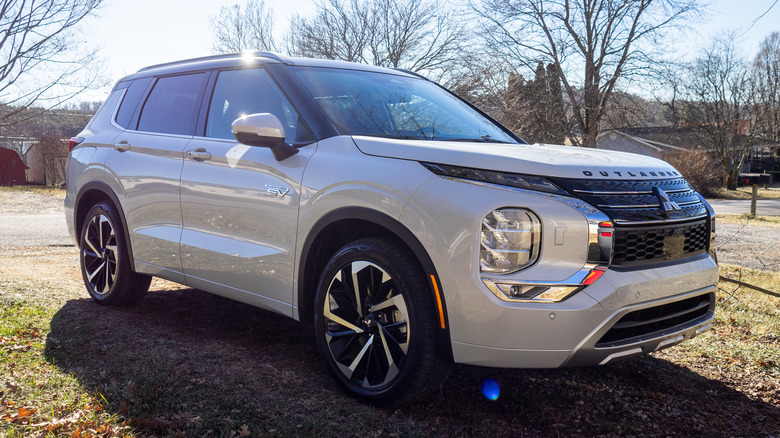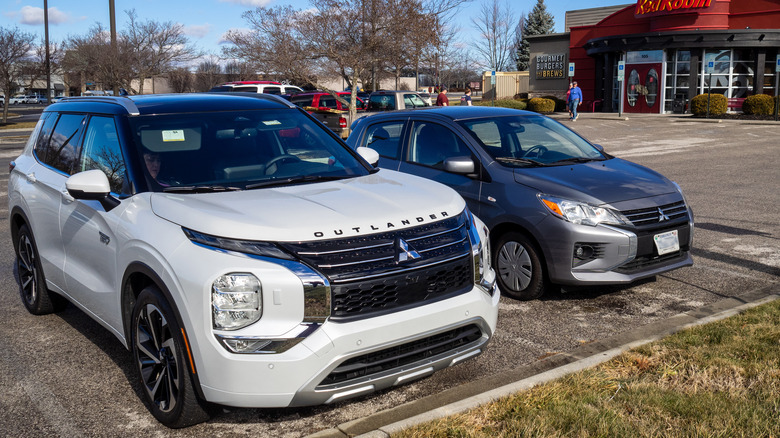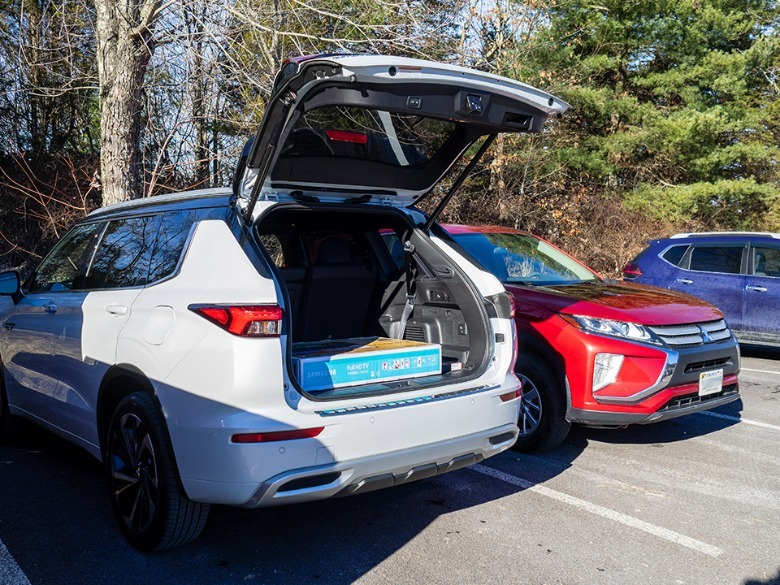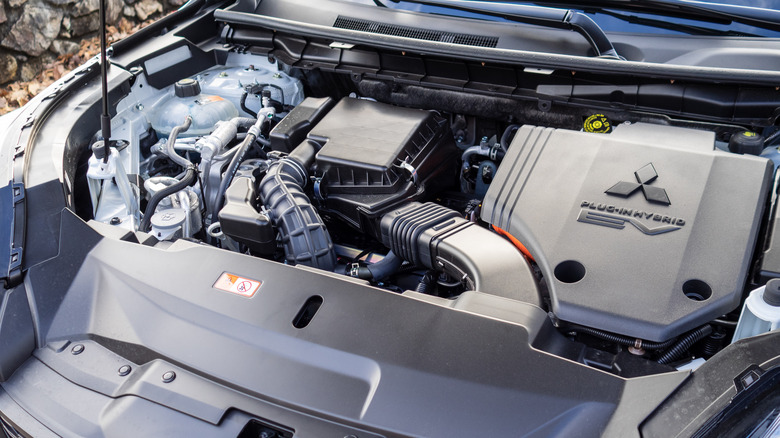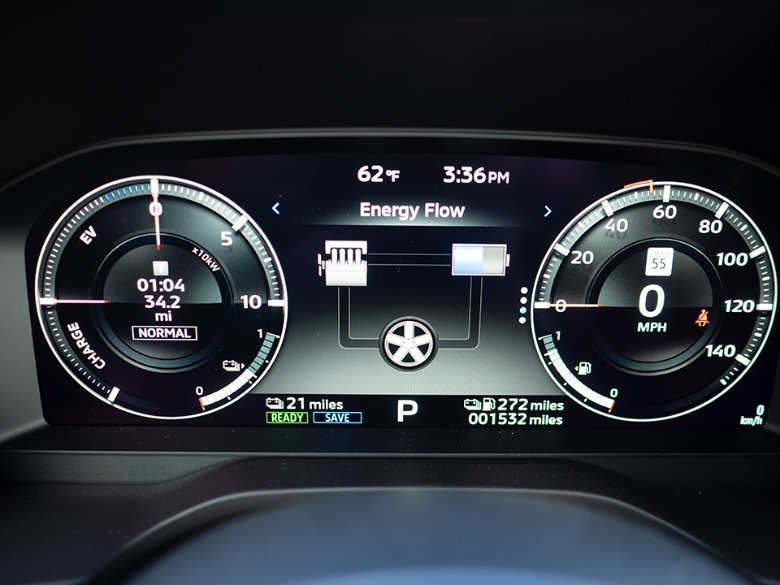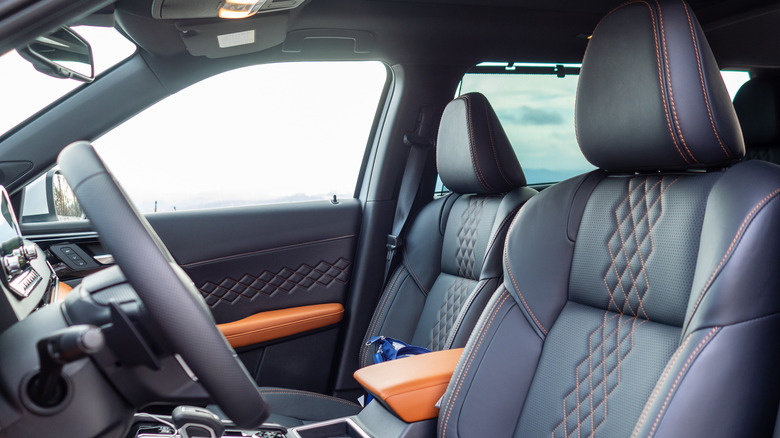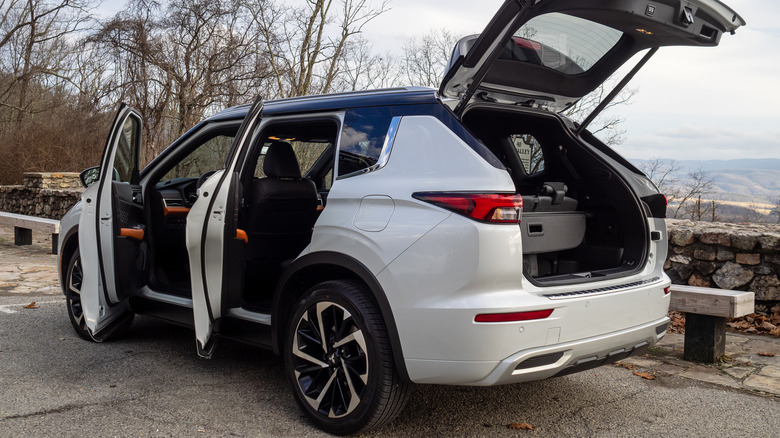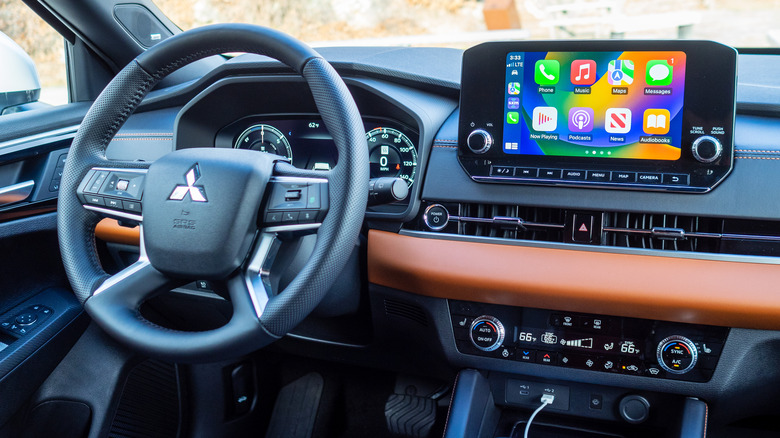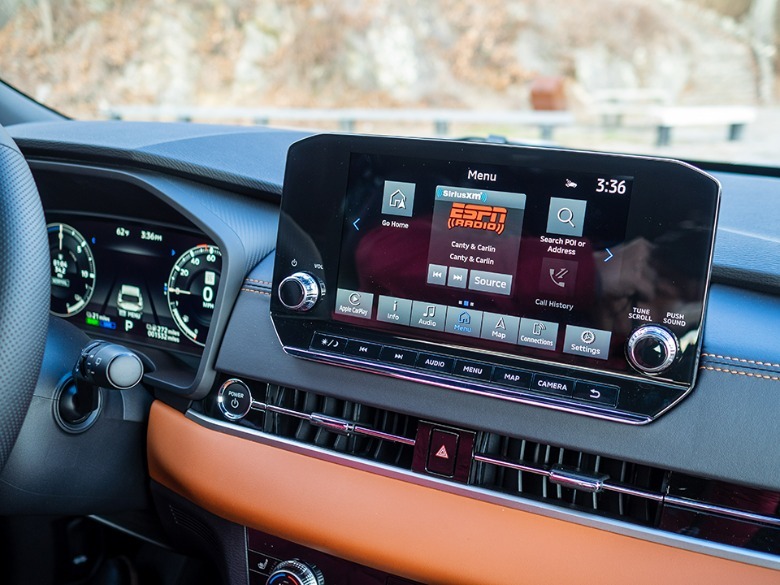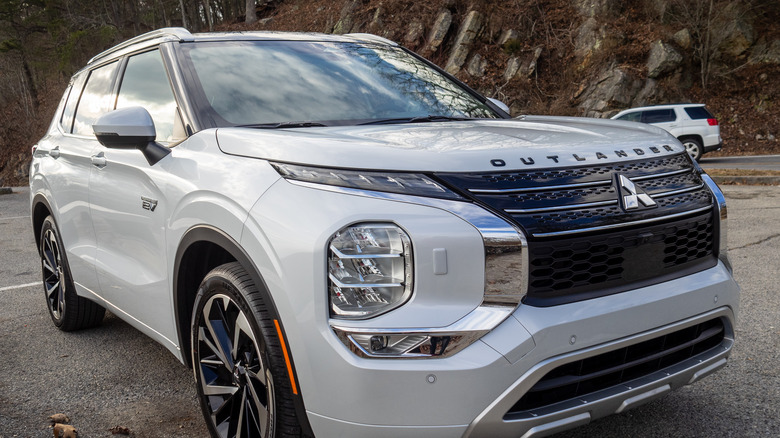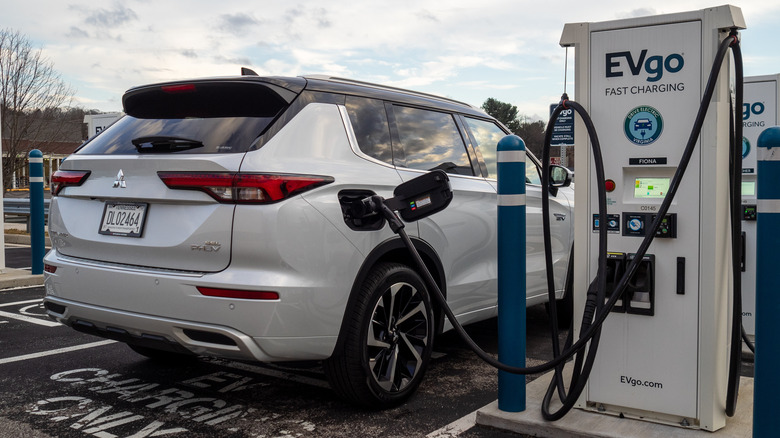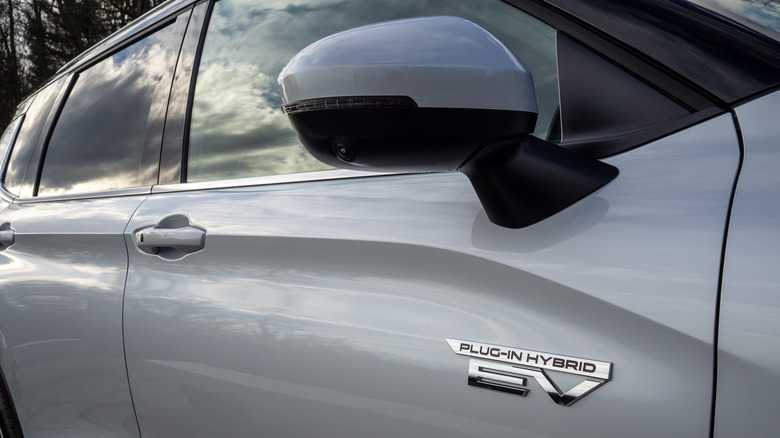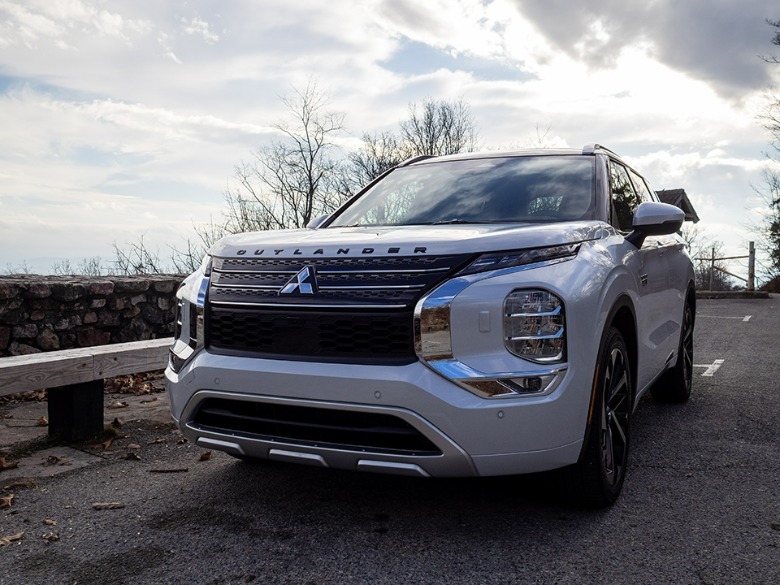2023 Mitsubishi Outlander PHEV Review: Plug-In Hybrid Has Plenty To Recommend It
- Up to 54 miles of EV range is solid
- DC fast-charging is rare on a PHEV
- Heads-up display is useful
- S-AWC all-wheel drive system delivers excellent handling
- Third-row "seating" better-off folded into the cargo area
- Adaptive cruise control only available in certain driving modes
- One-speed transmission operation may confuse some at first
The holiday season means a few things to many. For starters, all of those discounts to get the holiday shopping started on Black Friday, Cyber Monday, and Small Business Saturday. Football of the collegiate and professional types enter the final stretch of their seasons, while hockey and the NBA are just starting to warm up against winter's chill. Herds of horsepower head down south for big events like the Snowball Derby in Florida or the Tulsa Shootout in Oklahoma. And, of course, the season is a time for friends and family to gather 'round the fire to exchange love and warmth, remembering the year that was while preparing for the new year to come.
Finally, the holiday season is the time of the year when every automaker wants to make December a month to truly remember, featuring ads of the newest models adorned with big red bows parked in front of a snow-covered home, serving as a replacement for Santa's sleigh and reindeer, or roaring through the snowy landscape because every month is always Truck Month. Mitsubishi was feeling the holiday spirit in a big way this year when they sent the newest member of the fourth-generation Outlander family my way to spend two weeks with me in my Old Dominion home down in southwestern Virginia (no red bow on the hood, though). Say hello to the 2023 Mitsubishi Outlander PHEV, the best ride to celebrate the holiday season, and my first-ever experience of a plug-in vehicle of any kind.
Good things come to those who meet California's emissions regs
The first Mitsubishi Outlander PHEV debuted with the third-generation compact crossover in 2012 at the Paris Auto Show for the 2013 model year. Originating from Mitsubishi's Concept PX-MiEV plug-in crossover from the 2009 Tokyo Motor Show, the Outlander PHEV was scheduled to arrive in the United States at the same time as its non-hybrid sibling for the 2014 model year. However, California's requirement for plug-in hybrids to have a battery-monitoring unit — meant to keep an eye on a given PHEV's battery pack in regards to emissions — delayed the Outlander PHEV's arrival to mid-2017 for the 2018 model year.
When it arrived, though, it was the Mitsubishi fans of Saint Paul, Minnesota who took to the new compact crossover PHEV like no one else — even Californians — pushing the city and surrounding area to the top of the field as Mitsubishi's top-selling Outlander PHEV market.
The new, second-generation Outlander PHEV joins the rest of the fourth-generation Outlander family a few months after its non-hybrid siblings landed in the United States. All Outlanders are built upon the Renault-Nissan-Mitsubishi Alliance CMF-CD "Alliance" platform, parts of which are shared with the only other model in the entire alliance using the platform as its foundation, the third-generation Nissan Rogue. The fourth-generation Outlander also takes inspiration from the GT-PHEV concept introduced to the world at the 2016 Paris Motor Show, and the Engelberg Tourer concept from the 2019 Geneva Motor Show.
All about those gains
The first-gen Mitsubishi Outlander PHEV combined the electric motors from the burgeoning cult classic Mitsubishi i-MiEV with a 2.0-liter MIVEC inline-four. Total output amounted to 197 horsepower, and while the gasoline engine could charge the battery, it could not send its petroleum ponies to the help the electric horses out back, as the engine was not directly connected to the rear wheels.
The battery pack itself was a 12 kWh lithium-ion unit, allowing the plug-in hybrid crossover to travel up to 22 miles before the gasoline burning began; total range was 310 miles. Not impressive, to be sure, but at least range anxiety would be least on anyone's mind with tons of gas stations likely along the way to their next destination.
For the second-generation Outlander PHEV, Mitsubishi took the plug-in crossover's powertrain to the gym. The 2.0-liter 4B11 MIVEC inline-four has been replaced by a 2.4-liter 4B12 MIVEC unit, it has a buffer 20 kWh battery pack placed behind the front passenger seat, plus beefier front and rear electric motors for a total 40% output increase.
Total output is now 248 horses and 332 lb.-ft. of torque, all directed through a single-speed transmission to Mitsubishi's Super-All Wheel Control and the full set of standard 18- or optional 20-inch alloys wrapped in Nexen Roadian GTXs. As you can see above, what would've been fully-charged a generation ago is less than halfway there for 2023. Total EV range on the new Outlander PHEV is just over 54 miles on a single charge. With the ECO driving mode engaged, total range is 420 miles.
A fine interior
The 2023 Outlander PHEV comes in four trim levels, from the base ES to the top-tier SEL (like my tester), plus the limited-edition 40th Anniversary Edition celebrating Mitsubishi's 40th anniversary in North America. The limited-edition package takes the SEL and its Premium Package up to the next level by adding Black Diamond paint and a bronze roof. Our copy, being the regular SEL trim, wore White Diamond with a black roof along with the Premium Package.
What does the $2,700 package get you? A power panoramic roof, for one, as well as black semi-aniline leather seating for seven (allegedly) with bronze stitching and matching synthetic leather door inserts with saddle tan arm rests. The driver and lucky front passenger get massaging for those long drives, and the driver gets a heated steering wheel, which we made use of more than a few times in the cold southwestern Virginia weather.
Seating for seven (allegedly)
Let's talk about the "seating" for "seven," though. The Outlander in all of its forms is a compact crossover — one much, much larger than my own 1997 Toyota RAV4 L five-door, whose size today would place it in the subcompact category alongside the Hyundai Kona and Nissan Juke. Unlike most compact crossovers, the Outlander has seated seven passengers since the second-generation. On paper, anyway.
In reality, the third row is only suitable for pets and the tiniest of children, and barely for the latter. This is true with the fourth-gen Outlander, rearmost legroom in which is so non-existent I didn't even attempt to bend my way past the second row to try it out. The third row would be better if it was facing the rear — a feature offered on the current Mercedes-Benz E450 4MATIC All-Terrain — so all the little ones can wave at the truckers behind you and yours. The tall headrests are better left down when not occupied, as they obstruct the rear view quite a bit, but the best thing you can do with the third row is fold it down and use it for the 30.4 cu. ft. of cargo room it offers (a total of 62.8 to 66.6 cu. ft. of cargo room is available with both second and third rows down, depending on the trim level chosen).
Technology here, there, everywhere
First of all, let us thank Mitsubishi for having lots of knobs to turn and buttons to push on the 2023 Mitsubishi Outlander PHEV. You can touch the screen, too, but in a time when more manufacturers have it in their heads to bury everything in haptic sensors under Gorilla Glass — looking at you, Mercedes-EQ and your Hyperscreen — physical controls for things like volume and the HVAC are more important to have than ever; why guess where something is when you can see and feel such things.
Of course, the Outlander PHEV does have the usual modern tech available to the driver. Standard features on our example include a 12.3-inch full digital gauge cluster, a 9-inch touchscreen with Apple CarPlay and Android Auto, an AM/FM stereo with HD Radio and a three-month trial of SiriusXM, auto-dimming rear view mirror, dual-zone climate, and a 24-month trial of Mitsubishi Connect. The SEL Premium Package adds a 10.8-inch heads-up display and a Bose nine-speaker premium sound system. The front doors have neat puddle lights, too, shining the Mitsubishi Motors logo onto the ground.
On the safety front, you really do get it all with the 2023 Mitsubishi Outlander PHEV. Adaptive cruise control — which helps with charging the plug-in hybrid via regenerative braking when traffic slows up — forward collision, hill-start assist, lane keeping and departure prevention, rear cross traffic alert, and the MI-PILOT Assist with Navi-Link. There are also rain-sensing wipers up front, automatic headlights plus LED daytime, fog and low- and high-beam lights, and a multi-view camera to make parking and backing out very easy.
New tricks for an old dog
This is the first time I ever reviewed a plug-in vehicle of any kind. I know I spent some time with the Mercedes-EQ EQS SUV and EQS AMG Sedan, plus got a ride in the GMC Hummer EV, but those were only for an hour or two at most. Thus, the two weeks I spent with the 2023 Mitsubishi Outlander PHEV were a learning experience in a few ways.
First, the single-gear transmission. The most trouble I had with it was in the car wash when I tried for a minute to get it in neutral for the conveyor belt to take me through the building. Even the attendants tried to figure it out before I discovered that you had to shift up without pushing in the shift button in order to bring it into neutral.
DC fast charging in a PHEV is rare
Then there's the matter of charging the Outlander. There aren't many free (and quick) options around, and my home doesn't have any charging stations or an outside outlet to use the 120-volt charging cord Mitsubishi bundles, so I had to go into Blacksburg to use the EVgo stations available. According to Mitsubishi, the Outlander PHEV's battery should reach 80% in 40 minutes from zero with the CHAdeMO port; it's one of the few PHEV's that support DC fast charging. On that first charge, it actually hit 76 percent at the 40-minute mark, which I've been told is pretty respectable; on the 120-volt port, a full charge from zero will take 6.5 hours.
I also figured out how to charge with the 2.4-liter inline-four by pressing the special "EV" button next to the driving mode dial; on my standard Draper Mountain Overlook driving loop, I gained some seven or eight miles on the battery. I gained seven more miles of range coming down the mountain, though, thanks in part to the regenerative braking getting a workout on the steep, windy road down into Pulaski. The fuel economy for the Outlander PHEV is 26 mpg combined on gas alone, or 64 MPGe with the electric and gas powertrains working together. I managed 35 mpg during the two weeks the compact was with me, mainly due to tons of in-town driving.
Plugged-in for the holidays
The two weeks I spent with the 2023 Mitsubishi Outlander PHEV definitely made for quite the holiday season. I got to experience life with a plug-in vehicle with the training wheels of gasoline to keep me going. My mom — who I take to her work in the morning — liked the front seat for the most part, aside from the bolstering, which did not take her larger frame as well as she would've liked. I also liked how well the S-AWC all-wheel drive system handled around even the sharpest of corners. I wasn't thrilled to discover that cruise control only works with Normal, Eco and Power driving modes while using Snow to help drive upon the wet roads of my Virginia home, nor with the $200 retractable tonneau cover, which only had a place with the third-row seats up (and wasn't set high enough to cover the family groceries).
Pricing starts at $39,845 for the base ES trim, $42,145 for the mid-tier SE and $45,445 for the top-tier SEL. Our tester came with a total sticker of $50,880 including destination and handling. Those cross-shopping the Toyota RAV4 Prime or Kia Niro PHEV do have one more candidate to consider in the 2023 Mitsubishi Outlander PHEV, though if they want to seat seven, it's best to move up to a mid-size crossover PHEV like the Kia Sorento PHEV or a minivan like the Chrysler Pacifica Hybrid. The Outlander PHEV isn't a bad place to be for the next holiday season, though.
